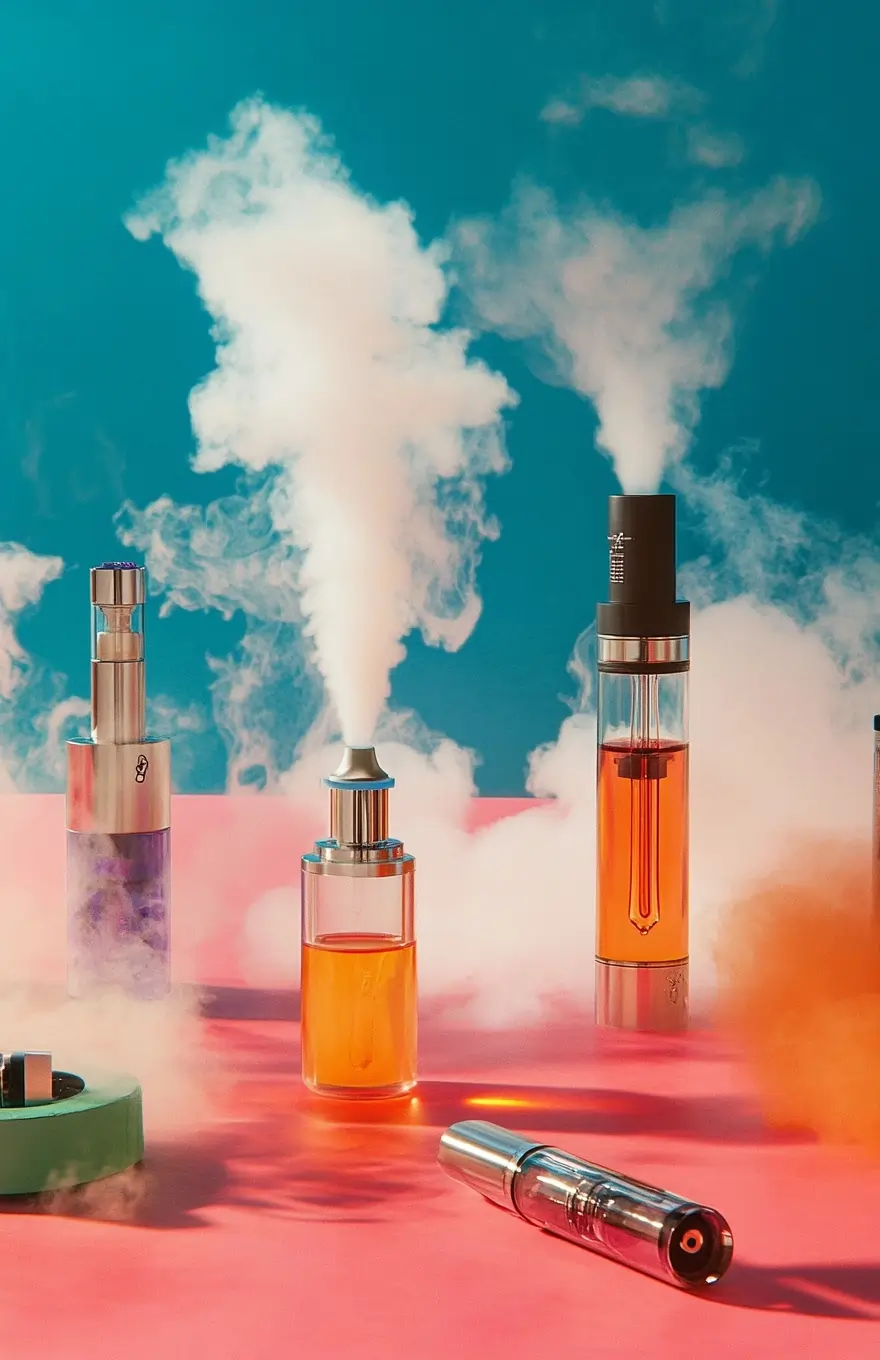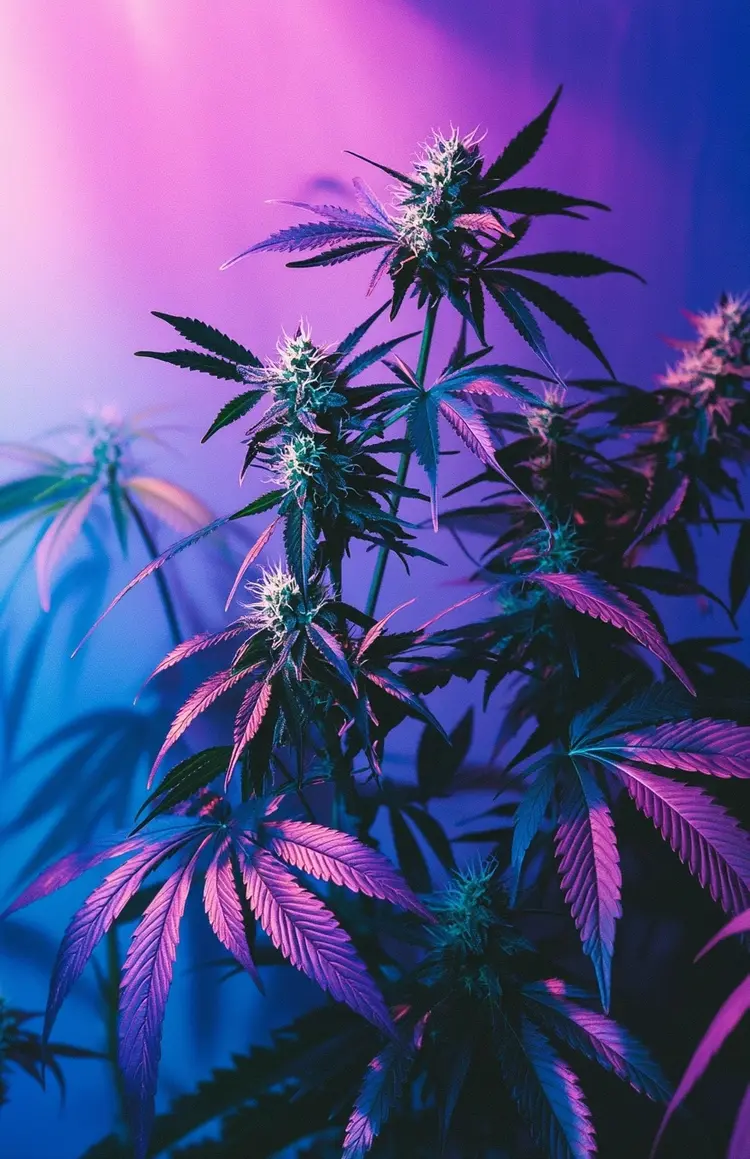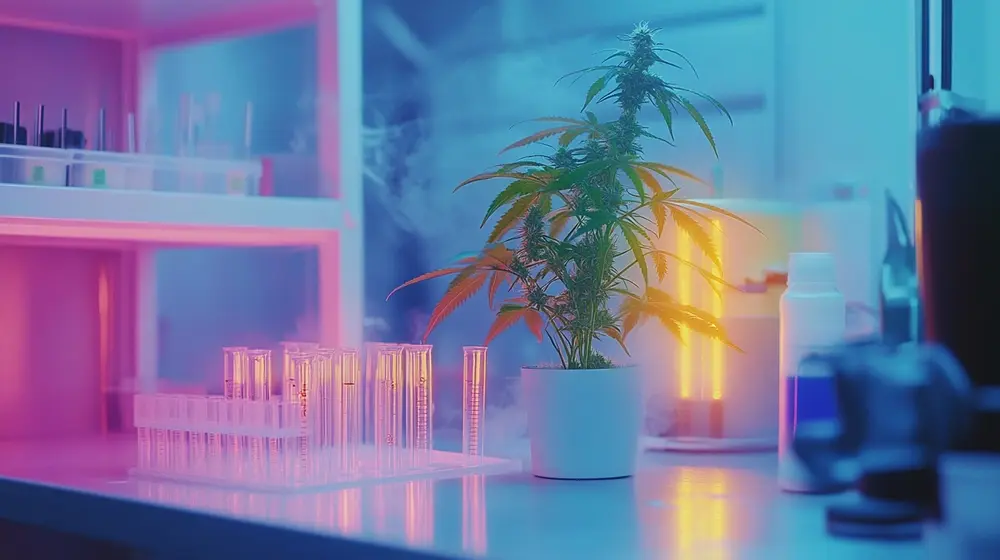

The decarboxylation of THCa is what turns the non-psychoactive cannabinoid into THC, giving it the psychoactive properties many cannabis consumers seek. This process uses heat to trigger a chemical reaction that releases carbon dioxide, unlocking the full potential of your cannabis material.
In this post, we’ll break down decarboxylation, how it works, and why it matters. We’ll share tips on using tools like baking sheets and oven thermometers, the best methods for decarbing cannabis, and how to avoid common mistakes like excessive heat.
Decarboxylation of THCa is what makes cannabis provide that classic “high.” It’s the process that converts THCa, found in raw cannabis plants, into THC. By introducing heat, you unlock the full potential of your cannabis material. Without decarboxylation, THCa will not get you buzzed.
THCa, short for tetrahydrocannabinolic acid, is a compound naturally present in raw cannabis plants. Its chemical structure includes an extra carboxyl group, which keeps it non-psychoactive until heat is applied.
When you smoke weed, vape, or bake cannabis, the high heat changes THCa’s molecular structure. This is when THCa transforms into THC, the compound responsible for euphoric effects. Without this step, the cannabis flower stays inactive and won’t deliver its maximum potency.
Freshly harvested cannabis buds are rich in THCa, making it a key part of the raw cannabis plant. Understanding how it works and how to “decarb” it is important for getting the most out of your cannabis material, whether you’re vaping, cooking, or consuming cannabis products in other ways.
Decarbing THCa is necessary to get the effects of THC. THCa in its natural form is non-psychoactive, so you won’t feel anything if it’s not heated. By applying heat, you convert THCa into THC, activating its psychoactive properties. This is essential for making edibles, using a dab rig, vaping, or smoking cannabis. Without decarboxylation, your cannabis buds won’t get you buzzed.
Decarboxylation is how raw cannabis becomes active and ready to use. THCa contains an additional carboxyl group in its molecular structure. This group keeps it non-psychoactive. However, once heat is applied, the carboxyl group is removed, releasing carbon dioxide and turning THCa into THC, the compound responsible for psychoactive effects.
You don’t need to decarb weed before smoking THCa or vaping. The heat from these methods automatically converts the cannabinoid acids into active cannabinoids like THC. For edibles, the process takes longer since cannabis needs to be gently heated to protect its cannabinoids and terpenes.
Getting the right temperature is key to achieving maximum potency and avoiding losing important compounds. Storing cannabis in an airtight container helps keep it fresh and prevents natural decarboxylation from happening over time.

Decarboxylating THCa can be done in different ways, depending on your tools and preferences. Popular methods include using an oven, vaporizing cannabis, or even sous vide for precise temperature control. Each method converts THCa into THC, giving your cannabis material maximum potency and unlocking its psychoactive properties.
One of the easiest and most reliable ways to decarb THCa is to use an oven. Most people already have the necessary tools, like a baking sheet and an oven thermometer, in their kitchens.
This method involves gently heating ground cannabis at a controlled temperature to trigger the chemical reaction that turns THCa into THC. If you’re looking to prepare cannabis for edibles or other cannabis products, oven decarbing is a simple and effective option.
Decarbing THCa in your oven is straightforward, but following the steps carefully ensures the best results. Here’s a quick guide to help you achieve maximum potency while preserving the aromatic compounds and cannabinoids.
The sous vide method uses water and vacuum-sealed bags to gently heat your cannabis. This process maintains a more constant temperature than an oven, so you don’t have to worry about uneven heating or losing potency. The vacuum-sealed bag protects your cannabis material from moisture and oxygen, keeping it fresh and aromatic. It’s a reliable way to decarb THCa without risking overheating or burning your cannabis flower.
Sous vide decarbing is simple and beginner-friendly. Follow these steps to ensure your cannabis material is perfectly decarboxylated while preserving its cannabinoids and terpenes.
A decarb machine is a simple and precise tool for decarbing THCa. With these machines, the decarboxylation process becomes simple and hassle-free. Just load your cannabis material, set the temperature, and let the machine take care of the rest.
This method helps preserve cannabinoids and terpenes, keeping your cannabis material potent and aromatic. It’s perfect for making cannabis edibles or other cannabis products without the guesswork of manual methods.
Using a decarb machine is straightforward and saves time. Here’s a simple guide to ensure your cannabis material is decarbed perfectly:

Finding quality THCa flower clearance or concentrates doesn’t have to be a challenge. Here at Hollyweed, we offer fresh, flavorful, and potent strains that deliver unique effects. THCa hemp flower is a great choice if you enjoy consuming cannabis. You can smoke it, vape it, or use it to make cannabis edibles after decarbing. Here are some of our top strains:
Our THCa concentrates are perfect for those looking for strong effects and rich flavors. They’re super high in potency, making them a favorite for experienced cannabis consumers. Our THCa concentrates & Live rosin cartridges are pure, flavorful, and pack a punch.
Hollyweed sets the bar high with top-quality products and unbeatable reliability. Every strain is carefully curated and lab-tested to ensure purity, potency, and safety. Our USA-grown flower is always fresh and grown to maximum potential. Here’s how it stands out:
The heat and time you use during decarboxylation are important for converting acidic cannabinoids like THCa and CBDa into active THC and CBD. A study from 2016 gives a clear guide on the ideal temperatures and times for this process. Here’s a simplified breakdown:
| Conversion | Time Needed | Temperature (ºF) | Temperature (ºC) |
|---|---|---|---|
| THCa → THC | 30 minutes | 230ºF | 110ºC |
| THCa → THCa | 9 minutes | 265ºF | 130ºC |
| CBDa → CBD | 45 minutes | 230ºF | 110ºC |
| CBDa → CBD | 20 minutes | 265ºF | 130ºC |
Higher temperatures can work faster, but too high can destroy cannabinoids and terpenes, so it’s best to keep it at the suggested ranges. Tools like an oven thermometer help with precise temperature control, ensuring your cannabis material reaches maximum potency without losing its aromatic compounds or benefits.
Decarbing THCa is easy, but a few mistakes can reduce the quality of your results. Knowing what to avoid can help you get the most out of your cannabis flower and enjoy it fully. Here’s what to watch out for:
Decarbing THCa is all about getting the process just right to enjoy its full effects. Pay attention to temperature, time, and the method you use to convert THCa into THC. Whether you’re baking, vaping, or using a decarb machine, proper, precise temperature control ensures you get the best flavor and potency.
Use tools like an oven thermometer and parchment paper to avoid mistakes like overheating or uneven results. After decarbing, store the cannabis in an airtight container to keep it fresh.
For the best experience, trust Hollyweed for premium cannabis flowers and concentrates. We offer high-quality, lab-tested products to ensure safe, potent, and consistent results. With our top-tier strains and reliable options, you can always count on a superior cannabis experience.